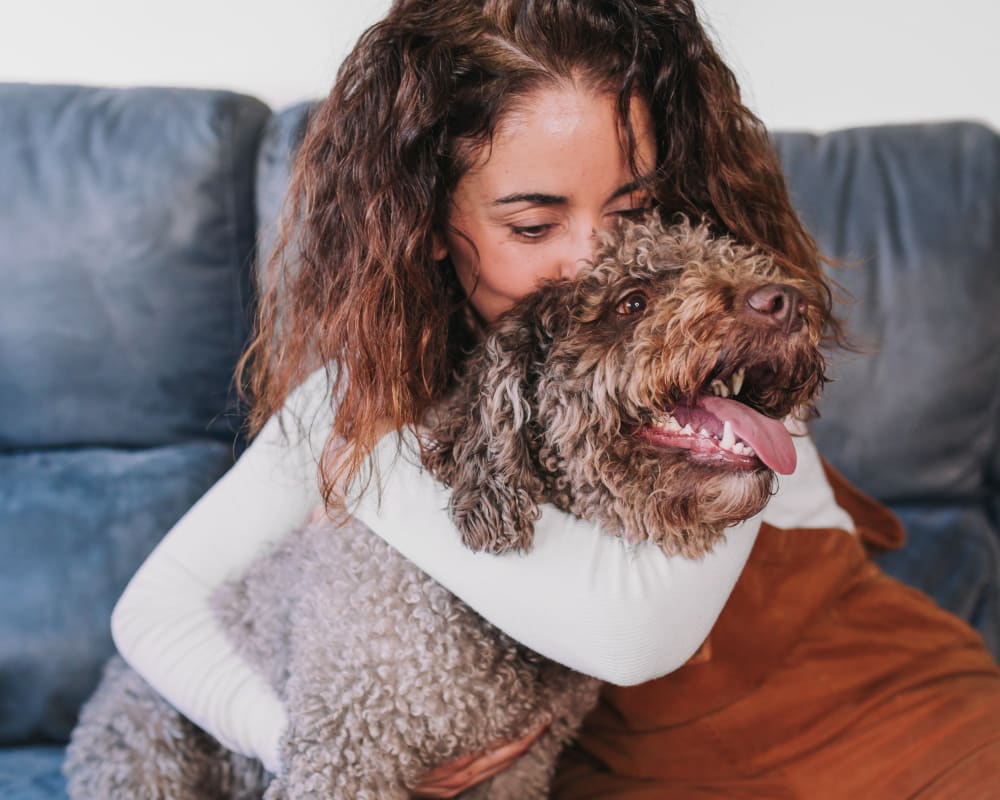What is Fear Free Certification?
When veterinary professionals become Fear Free Certified, they are showing their dedication to your pet's comfort and well-being.
The courses required for certification include techniques that help reduce the fear, anxiety, and stress that may accompany a trip to the veterinarian.
At Northside Veterinary Clinic, we are proud to have Fear Free Certified veterinarians who have undergone this training to learn how to create a calm and welcoming environment for your pets.
Their training also allows them to recognize when patients are feeling fearful or anxious and in need of a more gentle approach.

Preparing for an Anxiety-Free Appointment
Cats and small- to medium-sized dogs should be comfortable with their carrier. To get your pet into the carrier you can leave it in an area of the home where your cat or dog likes to spend their time. They will usually enter of their own free will. Once they are inside their carrier, you can place a towel over it to help create a safe place with familiar scents.
The carrier should have toys as well as soft, comfortable bedding or a non-slip mat. If possible, choose a carrier with a removable top. This makes it more accessible for your veterinarian. Some pet parents also choose to spray pheromones in the carrier.
With a medium to large dog, be sure to use an approved restraint system in the car. You should take care to stop and start driving gently and keep the music low to ensure a calm environment.
When booking your appointment, let us know if your pet gets stressed coming into the lobby, or when meeting new people or other animals. We can have you wait in the car and bring you directly into an exam room. There may also be options to send medication home to help with car sickness or to help decrease the level of stress once your dog or cat gets to the veterinarian.
Our Fear-Free Approach
Here are some of the ways that we ensure a positive experience for your pet:
- A Calm, Quiet Environment
At our veterinary clinic, we do our best to keep the atmosphere calm, quiet, and positive.
We will try to keep dogs and cats separate in the waiting area to help reduce stress levels. Cats should be in their carriers and kept off of the floor and on a sturdy table or chair. Keep your dog leashed and close to your side to minimize interaction with other pets.
We know that sudden movements and loud noises may startle your dog or cat. To prevent this our veterinary team will remain calm, speak in quiet voices, and approach your pet in a slow, careful manner.
- Good Communication Between Pets & People
We focus on understanding and identifying how pets communicate signs of stress to us. These signs can include several subtle and obvious signals, from a tense expression or dilated pupils to growling, hissing, or a tucked tail.
We will also ask pet owners about known triggers for stress. These often include sounds, scents, discomfort, disease processes, and unfamiliar people.
Getting to know your canine and feline companion and understanding what stresses them out, and how they communicate that stress, helps us better manage it during their visits.
- Treats & Toys
To encourage a positive experience and decrease fear, stress, and anxiety during the visit, rewards such as treats, toys, or petting can be used during an exam or when performing diagnostic tests.
While we are happy to offer your furry friend a treat from our clinic, we also encourage you to bring their treats or food with you to the visit, especially if your pet is on a special diet.
- Sedation Options
For the majority of our procedures, your pet will be anesthetized, but for the odd time that they are not, a mild sedative may be recommended to make sure that the procedure can be performed safely and is less stressful for the patient.
If you are aware of your pet's anxiety ahead of their visit, it may be beneficial for the veterinarian to provide you with a mild sedative to give to your pet at home prior to an appointment.

